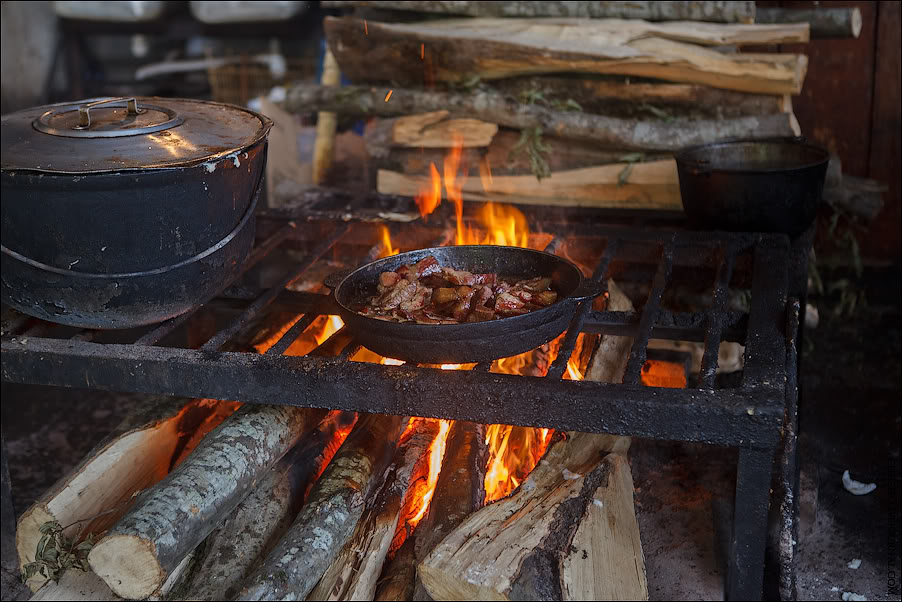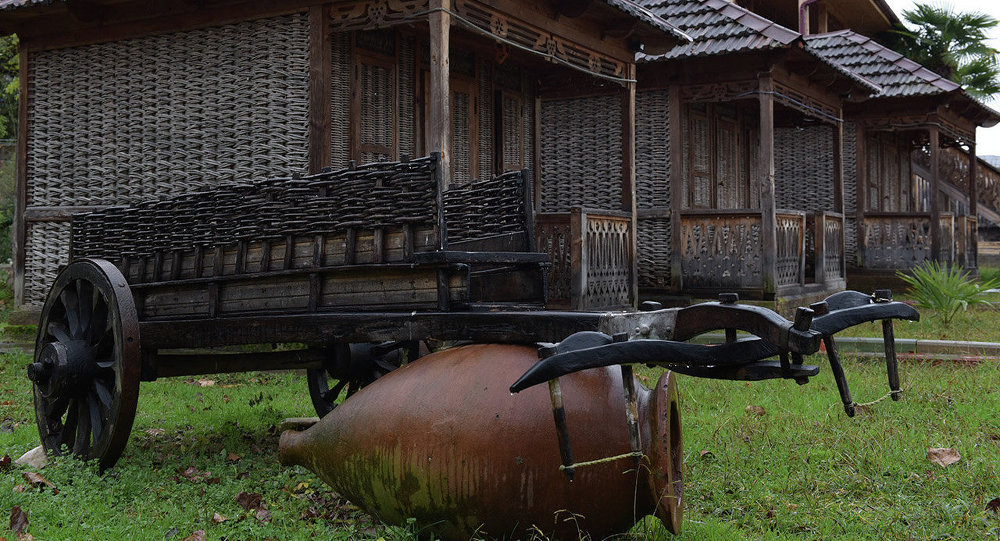

Apatskha as a traditional dwelling of Abkhazians
Apatsha ıs one of the types of traditional Abkhaz structures. This quadrangular wicker home, which is the second half of the XIX century became widespread and became the main type of dwelling of Abkhazians.
A wide canopy of apatsha propped usually two or four poles. It had two doors- one against the other. Moreover, the front called the top, and the rear - lower.
In traditional homes floor was dirt, carefully leveled and compacted. But in small rooms the floor was made of boards.
The height of the walls of woven homes, regardless of their shape and type was little more than a man. The walls are easily passed into the air and light spaces. Typically, the front wall left a small opening in the form of a rectangle: "The door to the head" Some researchers believe that it served more to monitor what is happening in the courtyard than for illumination.
Many people, especially those living in mountain villages to insulate their homes coated walls wıth glue. To give strength to mix it with the crushed straw or hay, and then produced whitewash. Whitewash made of lime masses that are delivered from the rocky gorges of mountain rivers.
All wicker home, including apatsha, covered with perennial grasses, mainly from the family of sedges, ferns, straw.
As a general rule, except apatsha, all woven dwellings were single-chamber construction and apatsha could have two, sometimes three rooms. The largest of them is usually located to the right of the entrance. In this large room at the family hearth cooking and eating, to discuss their everyday problems. It slept older family members. In some cases, it served as yet and the living room. Younger members of the family slept in the smaller rooms.
In the center of the room, a little closer to the "bottom" the door has an open hearth. Fireplace in the dwellings of the round form was a kind of a semi-circle; ıt was quadrangular in apatsha. In general, each owner tried to arrange your focus as much as possible. It continuously burning fire ıs a symbol of the continuity of life. Before going to the bed the owner of the house hid glowing embers in the ashes to the morning light a fire by them. According to legend, the fire ıs a phenomenon of extraordinary, supernatural, ıt has magical powers, contributing to the successful continuation of the species with the traditions inherent in it.
In focus were placed benches of varying lengths. By the side walls attached wooden bunks, over which hung woolen blankets. On the benches were bedding. The room could be all sorts of boxes, boxes that store valuable family items. Somewhat higher shelves nailed to the wall, which were placed kitchen utensils. Against one wall was a flat stone graters, where the hostess cooked adjika. On the wall behind the special hooks and kept narrow table elongated shape with relatively low legs, as well as saddles, weapons, cloaks.












